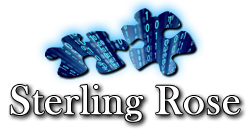We’ve seen lots of patches from chip manufacturers and operating-system publishers trying to resolve the Spectre and Meltdown issues. Their effectiveness is mixed, but there are a couple of things you can do to help protect your systems: backup your files and update your software.
The patches came out quickly last month, and they kept on coming as chip manufacturers and publishers of apps and operating systems tried to close the open doors that Spectre and Meltdown use to get into a computer. If you installed all the updates, even multiple updates from chip manufacturers and software publishers, you did the best you could to mitigate problems.
If you haven’t installed updates for operating systems, applications, firmware, browsers and antivirus protection, do it NOW. If you have not set up your systems to automatically install updates, we suggest you do that now, too. Every supplier with a stake in your success is working ‘round the clock to shore up any weaknesses in their products. The faster you install them, the faster you’ll protect your systems and data.
Here is what you and the computer industry are up against:
Meltdown breaks the most fundamental isolation between user applications and the operating system. This attack allows a program to access the memory, and the secrets, of other programs and the operating system. If your computer has a vulnerable processor and runs an unpatched operating system, you risk leaking sensitive information. This applies both to personal computers as well as the cloud’s infrastructure.
Spectre also breaks the isolation between applications. It allows an attacker to trick error-free programs, which follow best practices, into leaking their secrets and may actually make applications more susceptible to attacks.
While Spectre and Meltdown affect chips, they resulted in computer failures that, in turn, resulted in the losses of apps and data files. In a number of cases in which our clients were affected, we found that Google Chrome was piece of every problem. We don’t say this to point a finger at Google; we note it to make sure you have the latest version of your browser installed.
In the more severe cases, we had to reinstall software systems – with all the cumulative patches – and data files because everything was wiped out. In the most extreme cases, we had to replace computers. This, of course, required that all data files were backed and that all software for operating systems and applications were licensed.
Using subscriptions for operating and application software can eliminate just about all problems associated with keeping your systems up-to-date and licensed. They also can provide access to backed-up data files to help restore your system. The bottom-line benefit is that if your system is struck by some disaster, which can include Spectre and Meltdown, a ransomware attack, or a virus or malware invasion, we can wipe your computers and servers of infections and initiate clean installations of your operating system, firmware, and application software and then restore settings and data.
Without the subscription, you may need to purchase software and then recreate all of your settings as best as possible. And if you don’t have data files in a separate, secure location, you’ll need to find the latest files you have and then restore them in your recreated system.
As we make these points, we are aware that everyone has budget restrictions. However, you need to look at the costs associated with an interruption due to an IT system failure. Any money you may have saved by hanging onto old equipment and software can be wiped by a single event.
By making smart investments to your system, you’ll be able to maximize your security and efficiency. That’s important for home use as well as a business. More and more, we have multiple users conducting some sort of transactions over the internet, and those activities can take place from remote locations. It’s a continuing trend in our use of technology. Subscriptions are a continuing trend, too, in the way we keep our systems ready to do all the things we do.
We can help you make the best decisions to balance your IT needs and available funds. Call us – 973-433-6676 – or email us to discuss your update needs and develop a plan to meet them.
